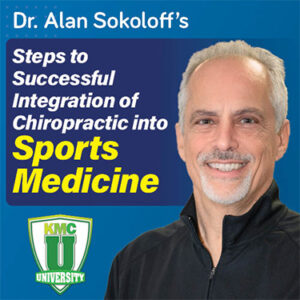Avoid Claim Denials with Diagnosis Pointers
It can be a little overwhelming at first to think about the mechanics of coding to properly communicate your patient’s situation when billing third-parties. Although the number of codes that most Doctors of Chiropractic utilize are few in comparison to other specialties, there are key factors to consider in order to communicate properly. Most issues with denied chiropractic claims can be mapped back to charge entry errors with either the doctor or the staff entering the data incorrectly. This can usually be mapped back to a lack of understanding of the basic rules. If not that, it’s a misunderstanding of the billing software’s fields that are necessary to capture accurate data.
Point at the Right Thing
On a 1500 Claim Form, Box 24 E is for the Diagnosis Pointer, if needed. This field mirrors the doctor’s treatment plan by indicating for which diagnosis a certain procedure has been ordered. For example, if the provider has ordered electric muscle stimulation for the patient, it may be for the diagnosis of edema. An auditor can track backward from:
- the code billed (97014 of G0283),
- to the treatment plan where the procedure was ordered,
- to the diagnosis of localized edema (R60.0),
- to the examination in which edema or tissue tone changes were documented,
- to the complaint in the area by the patient.
In order to tell that story to the best of your ability on a 1500 billing form, it’s critical to include the link between edema and the electric muscle stimulation with the diagnosis pointer.
Check Your Software Settings
Often, software defaults the diagnosis pointing by including all the diagnoses listed in Box 21 within Box 24 E on the claim form. Sometimes it will simply put the first four diagnoses from Box 21 on each line of service. Please, CHANGE IT TODAY! Start by mapping the data in your software to find out where diagnoses and the pointing process are achieved in your charge entry process.
One of the biggest challenges with chiropractic billing is when the provider renders both an adjustment of the spine (98940-98942), with another muscle related treatment such as manual therapy (97140). Because these two procedures are considered “mutually exclusive” according to the National Correct Coding Initiative (NCCI), they require additional information when billing to ensure that the procedures were not rendered in the same body region. We accomplish this with the use of diagnosis pointing and a modifier on the manual therapy code. The use of the 59 modifier, or sometimes, the XS modifier if required, designates this procedure as separate and distinct from the spinal adjustment. The letter listed in Box 24 E communicates to the payer what diagnosis (condition) is being treated with the manual therapy (97140). If your software automatically assigns all the diagnoses in this field your claim is incorrect. You are saying one thing by appending the modifier but a completely different thing by pointing to the same diagnosis as the CMT.
Be Vigilant!
Just because a claim is paid does not mean that you coded it correctly. Most payers will process a claim within 30 days because of state prompt pay laws. They rely on random claim audits or the review of aberrant patterns of billing by a provider to initiate a post-payment review of the documentation. What is found in the documentation must match the story told on the 1500 billing form, with codes, modifiers and diagnosis pointing. Remember, they can run a claim audit within the allowed recoupment period, which in most states is up to two years. Your money is already spent by that time! Don’t miss these important details of charge entry to properly connect the dots of your patient’s story and care to the billing and payment of their claims. It pays to have a solid charge entry process based on up to date and accurate coding knowledge.
KMC University is the profession’s expert in third-party payer mechanics. Questions? Contact us today.
Call (855) 832-6562 now or click to schedule a 15-minute Solution Consultation at your convenience.


I just want to take a minute and let you know how very much we appreciate Dr. April and all that she is doing to help us. She is very patient, helpful, and kind. She's especially patient with me. I can't thank her enough for all she is doing and the many ways she has helped us already. She's a real blessing!!





